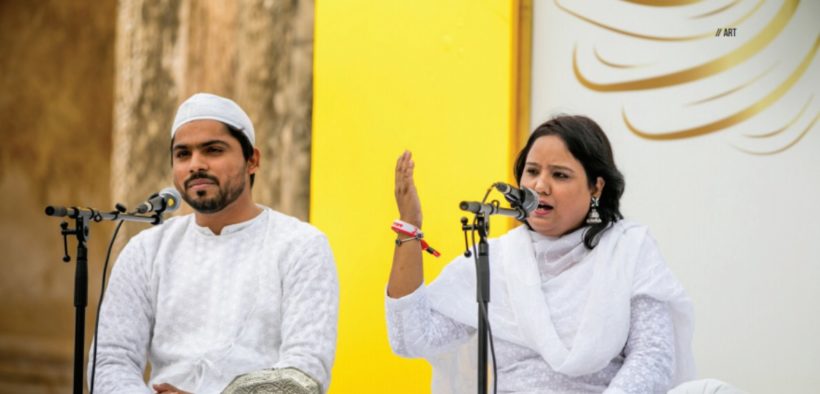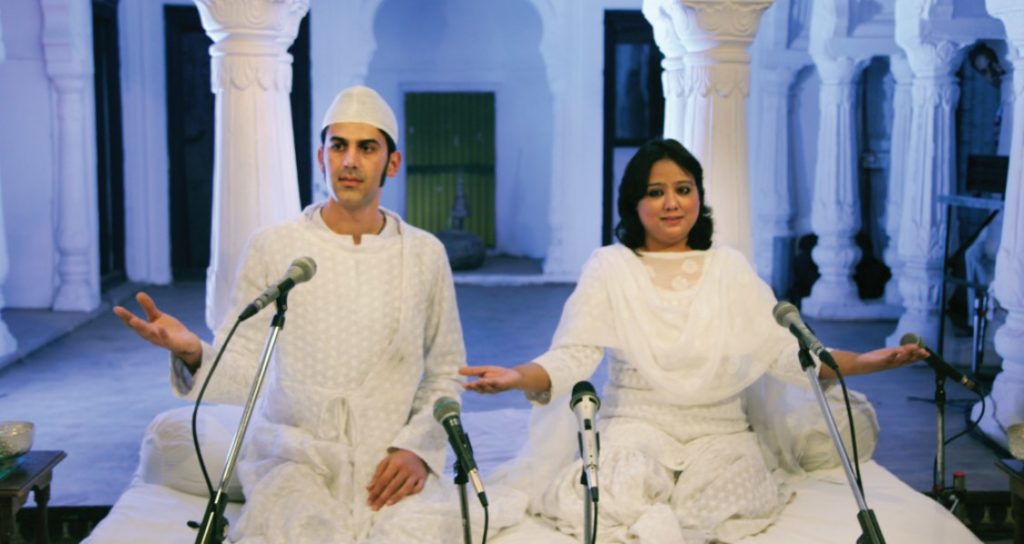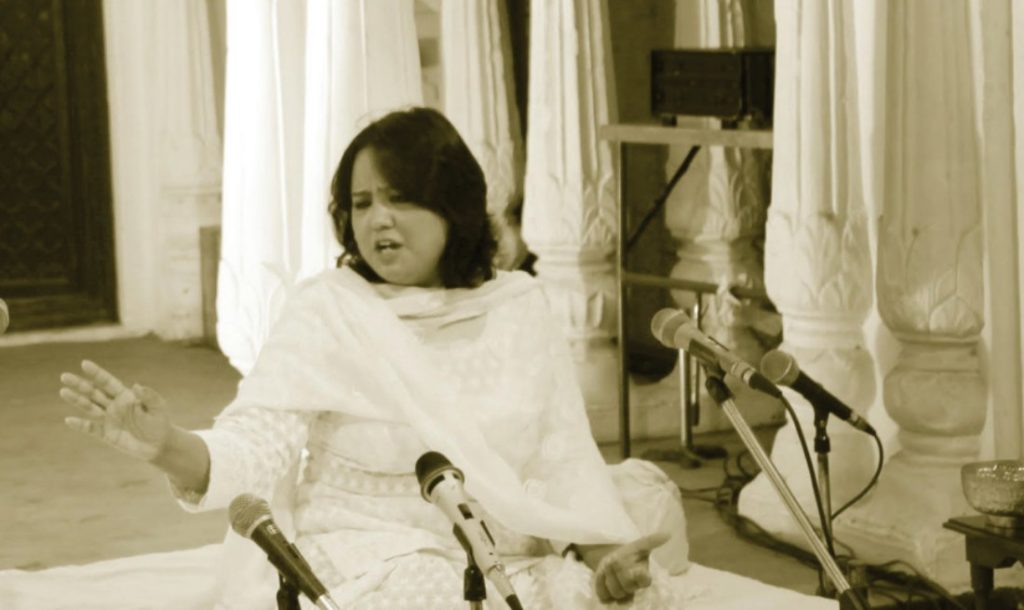Weaving Stories With Her Voice

In conversation with Fouzia Dastangoi about her love for storytelling, and her journey as a dastango.
By Deepti Deepak Varma
Giving new life to dastangoi, a 13th-century storytelling art form is the charming Fouzia Dastango. An Urdu oral form of storytelling, dastangoi has at its center a dastango, i.e. a storyteller, who uses his/her voice to orally recreate a dastan (a story). Not only is Delhi-based Fouzia working to revive an age-old art form, but she also happens to be the country’s first female dastango. “As a child, I would save up pocket money to buy story books from the Darya Ganj Sunday book market near my house. That was the beginning of my love affair with stories. I grew up listening to and reading Mullah Naseeruddin’s stories. And on finishing a story, I couldn’t wait to share it with my friends,” says Fouzia
When she was in the 11th grade, Fouzia got to witness the beauty of theatre first-hand when one of her teachers took their class to watch Rustom Aur Sohrab, a play which was part of the Persian epic, Shahnameh, by Persian poet Ferdowsi. It was later, in 2006, that Fouzia had her first brush with dastangoi. “I remember telling a good friend of mine that I wanted to do something new in the field of performance arts, to which he asked if I had ever watched dastangoi. Curious and excited, we went to watch a dastangoi performance by Mahmood Farooqui and Danish Hussain, modern-day dastangos who had revived the Urdu oral form of storytelling in India. And that was it. I fell in love,” she recalls with a deep sense of nostalgia.
And even though Fouzia had not seen or heard of a woman performer back then, that sure didn’t stop her from pursuing her love for dastangoi. “Although my family was reluctant at the start—as I was the first from the family who wanted to make a career out of being a dastango—they soon realised my passion for the art, and have since then supported me through thick and thin,” she says. After her first performance at iDiscovery, Gurgaon, went well, Fouzia was pumped to do more. “The performance I hold the closest to my heart is Ghimmi Kababi, a dastan based on the life of a famous Kababi in Old Delhi,” she adds.
“AS A CHILD, I WOULD SAVE UP POCKET MONEY TO BUY STORY BOOKS FROM THE DARYA GANJ SUNDAY BOOK MARKET NEAR MY HOUSE. THAT WAS THE BEGINNING OF MY LOVE AFFAIR WITH STORIES. I GREW UP LISTENING TO AND READING MULLAH NASEERUDDIN’S STORIES. AND ON FINISHING A STORY, I COULDN’T WAIT TO SHARE IT WITH MY FRIENDS.”
Fouzia

Dastangoi is different from other forms of storytelling in the fact that a dastango never uses any kind of props; dastangoi’s power and emotions lie in its script, and above all, the dastango’s performance. “We sit on a couch in the vajrasan position and narrate stories. The art of dastangoi is rooted in the power of one’s voice,” says Fouzia. Themes that Fouzia has explored for dastangoi cover women-centric issues, social issues relevant in present-day society, and historical aspects. “Dastangoi is extremely therapeutic, not just for the dastango, but also for the audience. It is truly heartwarming when people come up to me saying they felt an overwhelming sense of relaxation after watching me perform,” says Fouzia.

Heavily inspired by the traditions and culture of Old Delhi, Fouzia says it’s hard to miss its influence and aspects in her performances. Striving each day to sustain the dying art form of dastangoi, Fouzia says, “I feel the government must come forward with initiatives to help dastangoi flourish, be it by supporting shows and festivals or by providing scholarships and fellowships to students who are interested in the art form.” Super thrilled about her upcoming dastangoi performances which are based on the themes of rape and the #MeToo movement, Fouzia leaves us with a profound thought on what happiness means to her: “True happiness is when you don’t obsess over what other people have to say, and just follow your heart’s calling”
















